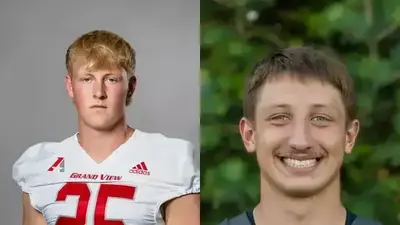How many of you woke up today and asked your beloved over breakfast: “Honey, I wonder how things are going at the wastewater treatment plant?”
Wastewater is all but invisible in our everyday lives but it is, nonetheless, essential to our health and quality of life. Sewers moving wastewater are buried under city streets, marked only by an occasional manhole cover. The treatment plant isn’t in a high-visibility location, and normally seen only by city employees, those traveling the Boone River Trail, or hauling grass or leaves to the city’s recycling site.
In our first article, we advised readers Webster City must make major upgrades to its wastewater treatment. The story will unfold over several years as a new facility is designed, approved by the Iowa Department of Natural Resources, built, tested, put into service, and paid for by residents and users.
It’s time for you to see the big picture.
Every time you flush a toilet, take a bath or shower, or run dishwashers or washing machines, you produce wastewater. In most homes, this happens a dozen times each day. Where does it all go? Let’s follow wastewater as it leaves your home.
First, it moves into a sewer line in a street near your home. In Webster City, this is typically an 8-inch line that runs downhill toward the wastewater disposal plant on East Ohio Street, one of the lowest-lying sites in the city. For readers with septic systems, waste runs through solid pipes to a septic tank, then through perforated pipes to a leach field, where it is slowly released into the soil.
At the wastewater plant itself, two main types of processing occur: primary, and secondary. Here’s a simplified look at how it works.
Primary treatment is mechanical in nature; solid and liquid wastes are separated, allowed to settle, then filtered several ways. Secondary treatments use bacteria to break down pollutants in the water, followed by more filtration in “clarifiers,” then chlorine is applied to kill bacteria. Chlorine can’t be discharged into the Boone River, so dechlorination occurs before water enters anaerobic digesters (sealed canisters with no oxygen inside) where more bacteria further break-down remaining wastes. From here “biosolids” flow into a storage tank, until they can be hauled by truck to city-owned land, and injected into soil there. The processed wastewater is discharged into an oxbow lake near Seven B Ranch, and from there, into the Boone River.
Despite all this, the water we’re discharging today into the Boone still contains too much phosphorus and nitrogen. This is the main reason we must build a new, much more advanced treatment plant capable of discharging much cleaner water that meets today’s Environmental Protection Agency and DNR standards.
In eighth-grade science class, you probably learned fertilizers are composed largely of phosphorus and nitrogen. Fertilizer applied in states along the Mississippi and Missouri rivers — Minnesota, Wisconsin, Iowa, Illinois, Missouri, South Dakota, Nebraska — can be washed directly into rivers by rains or, indirectly, via farm tiles, grass waterways, and ditches. Phosphorus and nitrogen from the Midwest are the main cause of a “dead zone” south of New Orleans in the Gulf of Mexico. The zone varies in size each year, but has generally gotten bigger since its discovery in the 1970s. Once in the Gulf, phosphorus and nitrogen cause overgrowth of plants, which use up oxygen in the water. This destroys habitat for shrimp, oysters and crab. Seafood production is one of Louisiana’s biggest industries, employing thousands, and generating $2 billion every year for its local economy. Cleaning up the Gulf of Mexico is a top national priority.
The EPA estimates about 20% of water pollution in Iowa can be traced to wastewater treatment. The remaining 80% is largely from agricultural production, both crop and livestock, and lawn chemical runoff from homes and golf courses.
The Boone River, where Webster City discharges its cleaned-up wastewater, flows through one of the most intensely-farmed regions in the U.S. In addition to some of the world’s most productive corn and soybean land, the Boone River valley is home to many confined animal operations. Manure, a byproduct of our animal agriculture, itself contains large amounts of phosphorus and nitrogen. As manure decomposes, it gives off ammonia, another pollutant, which is also now found in the Missouri and Mississippi rivers in growing quantities.
Wastewater discharge is officially classified as “point source” pollution. Point sources can be physically located and monitored, and are regulated under the Clean Water Act. If you’re old enough, you may remember when the Cuyahoga River, which flows through the heart of Cleveland, Ohio’s industrial district, caught fire in June 1969. A symbol of how toxic and dangerous the nation’s rivers had become, public outcry was instantaneous.
As national concern for untreated sewage, unregulated industrial and toxic discharges, and widespread destruction of natural wetlands grew, Congress passed the landmark Clean Water Act in 1972. While the Act clearly regulates point sources such as Webster City’s wastewater treatment plant, it provides no such guidelines for agriculture. That’s why efforts by Iowa farmers to clean up water running off their fields and from their animal confinements, remains 100% voluntary. An example of this type of activity is use of cover crops, which has been shown to reduce nitrogen and phosphorus loss by up to 30%. Cover crops, which can also minimize soil erosion, are used on just over 10% of Iowa’s farm ground, approximately 2.2 million acres.
View this article as it originally appeared in the Daily Freeman-Journal.
Original source can be found here.

 Alerts Sign-up
Alerts Sign-up